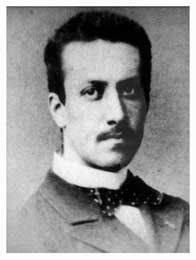Surrexit a mortuis
| Surrexit a mortuis | |
|---|---|
| Choral music by Charles-Marie Widor | |
 Widor in 1870 | |
| English | He rose from the dead |
| Key | C minor |
| Opus | 23/3 |
| Occasion | Easter |
| Composed | 1876 |
| Published | 1906 |
| Scoring |
|
Surrexit a mortuis ('He rose from the dead'), Op. 23, No. 3, is a composition for choir and two organs by Charles-Marie Widor. The text is an anonymous Latin Easter hymn. Named a motet, it was first published by Hamelle in 1906. The single work was published by Dr. J. Butz in 2008.
History[edit]
Widor composed Surrexit a mortuis around 1876. He was at the time, since January 1870, "provisional" organist of Saint-Sulpice in Paris, which features a main organ and a choir organ, both built by Aristide Cavaillé-Coll.[1]
The composition was originally conceived, with the title Sacerdos et Pontifex (Bishop and pope), for the installation of a new bishop at the Dijon Cathedral, more specifically for a pontifical procession.[2] It was dedicated to R. Moissenet, the master of the Cathedral's choirs.[2][3] As the event is rare, Widor saved the music for more frequent use by assigning it to an anonymous Easter hymn in Latin,[4] a text that appears nowhere else, and may have been written by the composer.[2]
Widor scored the music for a four-part choir (SATB) and two organs, following a specifically French tradition of using two organs, an orgue de choeur (choir organ) in the churches' choir, and a grand orgue (grand organ) at the opposite end of the building.[5][6] At Saint-Sulpice. Widor had a choir at his disposal, formed by the maîtrise of the church and around 200 "baritones" from the seminary.[4][6]
The work was first published by Hamelle in 1906. In a later edition, it was combined as 3 Motets, Op. 23, the other motets being Psaume 83, a setting of Psalm 84, and Tu es Petrus, both first published in 1904.[1] The single work was published by Dr. J. Butz in 2008 in an arrangement for one organist, also with the alternate text, Sacerdos et Pontifex.[3]
Text and music[edit]
Surrexit a mortuis, |
He rose from the dead, |
The organs play a substantial role in the composition, beginning and ending it alone.[6] It is in common time, marked Allegro,[3] and initially as C minor. The key is hidden, though, and the piece ends in C major. The unison men's voices introduce fanfares, the upper voices repeat them. A middle section in A-flat major turns to counterpoint and softer, more melodious singing, before a recapitulation of the first motifs that leads to increasing dynamics and more animated fanfares.[2]
Recordings[edit]
The composition was recorded in 1996 by the Westminster Cathedral Choir conducted by James O'Donnell[4] in a collection of masses and motets by Widor, Vierne and Dupré.[6] It was recorded in 2015 by Les Petits Chanteurs du Mont-Royal at Mount Royal, Montreal, with organists Vincent Boucher and Jonathan Oldengarm, and conducted by Gilbert Patenaude, in a collection of choral works by Widor and Louis Vierne.[1]
References[edit]
- ^ a b c Morgan, Dan (November 2015). "Louis Vierne (1870–1937) ... Charles-Marie Widor (1844–1937)". musicweb-international.com. Archived from the original on 11 April 2023. Retrieved 11 April 2023.
- ^ a b c d Bundy, Michael R. (November 2015). Visions of Eternity: The Choral Works and Operas of Widor, Vierne and Tournemire. Troubador Publishing. pp. 64–65. ISBN 9781788037334. Archived from the original on 2023-04-28. Retrieved 2023-04-11.
- ^ a b c "Surrexit a mortuis / Sacerdos et Pontifex" (PDF) (in German). Dr. J. Butz. 2023. Archived (PDF) from the original on 5 April 2023. Retrieved 5 April 2023.
- ^ a b c "Vierne, Widor & Dupré: Choral Music". Hyperion Records. 2023. Archived from the original on 11 April 2023. Retrieved 11 April 2023.
- ^ "Surrexit a mortuis Op. 23/3, for SATB choir and two organs". Catalogue. Crescendo. 2023. Archived from the original on 11 April 2023. Retrieved 11 April 2023.
- ^ a b c d Rochester, Marc (April 1997). "Vierne/Widor/Dupré Masses and Motets". Gramophone. Archived from the original on 11 April 2023. Retrieved 11 April 2023.
